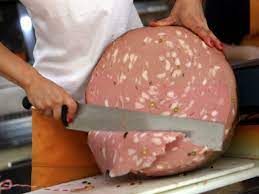The restaurant business has turned into a dynamic and ever-growing industry. So, food safety must be a priority for these establishments, especially during the COVID-19 pandemic. The aim of this study was to determine the effect of training intervention on the health and food safety knowledge, attitude, and self-reported practice (KAP) of restaurant food handlers during the COVID-19 pandemic.
 This quasi-experimental study was conducted on 159 restaurant food handlers in Tehran, Iran. The training intervention was developed based on the latest global guidelines. The KAP of the subjects was measured before and after the training. Fisher’s exact test, paired t test, and repeated measures ANOVA were used for statistical analysis. Data analysis was done using the IBM_SPSS software. The total knowledge scores of participants were low (17.6%), moderate (35.2%), and good (47.2%) before training, which were changed to 5% (low), 23.9% (moderate), and 71.1% (good) after training. The total pretraining attitude scores were 0.6, 77.4, 18.2, and 3.8% that were changed to 0% (strongly negative), 49.1% (negative), 33.3% (positive), and 17.6% (strongly positive), respectively. Also, the self-reported practice scores of the participants before training were 1.3, 56, and 42.7 that were changed to 0% (weak), 26.4% (acceptable), and 73.6% (desirable) after the intervention, respectively. Paired t test results showed a statistically significant increase in all scores. The interaction of training with age and education was statistically significant in increasing the knowledge and attitude scores of the participants by the repeated measures ANOVA.
This quasi-experimental study was conducted on 159 restaurant food handlers in Tehran, Iran. The training intervention was developed based on the latest global guidelines. The KAP of the subjects was measured before and after the training. Fisher’s exact test, paired t test, and repeated measures ANOVA were used for statistical analysis. Data analysis was done using the IBM_SPSS software. The total knowledge scores of participants were low (17.6%), moderate (35.2%), and good (47.2%) before training, which were changed to 5% (low), 23.9% (moderate), and 71.1% (good) after training. The total pretraining attitude scores were 0.6, 77.4, 18.2, and 3.8% that were changed to 0% (strongly negative), 49.1% (negative), 33.3% (positive), and 17.6% (strongly positive), respectively. Also, the self-reported practice scores of the participants before training were 1.3, 56, and 42.7 that were changed to 0% (weak), 26.4% (acceptable), and 73.6% (desirable) after the intervention, respectively. Paired t test results showed a statistically significant increase in all scores. The interaction of training with age and education was statistically significant in increasing the knowledge and attitude scores of the participants by the repeated measures ANOVA.
Improving the KAP of food handlers by health and food safety training can improve the status of restaurants and minimize the outbreak of pandemic diseases, including COVID-19, which is an effective step in community health. Thus, it is an urgent need for policymakers to design an online system of continuous food safety training for food handlers.
A quasi-experimental study on the effect of health and food safety training intervention on restaurant food handlers during the COVID-19 pandemic, 25 April 2021
Food Science & Nutrition
Fatemeh Mohammadi-Nasrabadi, Yeganeh Salmani, and Fatemeh Esfarjani
DOI: 10.1002/fsn3.2326









